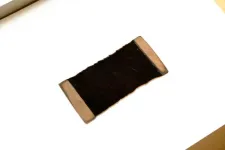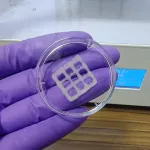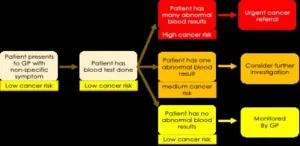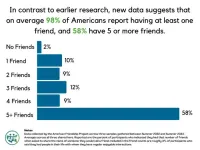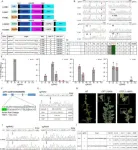(Press-News.org) Researchers from North Carolina State University and the Massachusetts Institute of Technology have designed a protocol for harnessing the power of quantum sensors. The protocol could give sensor designers the ability to fine-tune quantum systems to sense signals of interest, creating sensors that are vastly more sensitive than traditional sensors.
“Quantum sensing shows promise for more powerful sensing capability that can approach the fundamental limit set by the law of quantum mechanics, but the challenge lies in being able to direct these sensors to find the signals we want,” says Yuan Liu, assistant professor of electrical and computer engineering and computer science at NC State and corresponding author of the research. Liu was formerly a postdoctoral researcher at MIT.
“Our idea was inspired by classical signal processing filter design principles that are routinely used by electrical engineers,” Liu says. “We generalized these filter designs to quantum sensing systems, which allows us to ‘fine-tune’ what is essentially an infinite dimensional quantum system by coupling it to a simple two-level quantum system.”
Specifically, the researchers designed an algorithmic framework that couples a qubit to a bosonic oscillator. Qubits, or quantum bits, are quantum computing’s counterpart to classical computing’s bits – they store quantum information and can only be in a superposition of two basis states: ├ |0⟩, ├ |1⟩. Bosonic oscillators are the quantum analog of classical oscillators (think of a pendulum’s motion), and they share features similar to classical oscillators, but their states are not limited to a linear combination of only two basis states – they are infinite-dimensional systems.
“Manipulating the quantum state of an infinite-dimensional sensor is complicated, so we begin by simplifying the question,” Liu says. “Instead of trying to figure out amounts of our targets, we just ask a decision question: whether the target has property X. Then we can design the manipulation of the oscillator to reflect that question.”
By coupling the infinite dimensional sensor to the two-dimensional qubit and manipulating that coupling, the sensor could be tuned to a signal of interest. Interferometry is used to encode the results into the qubit state which is then measured for readout.
“This coupling gives us a handle on the bosonic oscillator, so we could use a polynomial function – math that describes wave forms – to engineer the oscillator’s wave function to take a particular shape, thus attuning the sensor to the target of interest,” Liu says.
“Once the signal happens, we undo the shaping, which creates interference in the infinite dimensional system that comes back as a readable result – a polynomial function determined by the original polynomial transformation of the oscillator and the underlying signal – in the qubit’s two-level system. In other words, we end up with a ‘yes’ or ‘no’ answer to the question of whether the thing we’re looking for is there. And the best part is that we only need to measure the qubit once to extract an answer – it’s a ‘single-shot’ measurement.”
The researchers see the work as providing a general framework for designing quantum sensing protocols for a variety of quantum sensors.
“Our work is useful because it utilizes readily available quantum resources in leading quantum hardware (including trapped ions, superconducting platform, and neutral atoms) in a fairly simple way,” Liu says. “This approach serves as an alarm or indicator that a signal is there, without requiring costly repeated measurements. It’s a powerful way to extract useful information efficiently from an infinite dimensional system.”
The work appears in Quantum and was supported by the Army Research Office under project number W911NF-17-1-0481, and by the U.S. Department of Energy under contract number DE-SC0012704. Jasmine Sinanan-Singh and Gabriel Mintzer, both graduate students at MIT, are co-first authors of the research. Isaac L. Chuang, professor of physics and electrical engineering and computer science at MIT, also contributed to the work.
-peake-
Note to editors: An abstract follows.
“Single-shot Quantum Signal Processing Interferometry”
DOI: 10.22331/q-2024-07-30-1427
Authors: Jasmine Sinanan-Singh, Gabriel Mintzer, Isaac L Chuang, Massachusetts Institute of Technology; Yuan Liu, North Carolina State University
Published: July 30, 2024 in Quantum
Abstract:
Quantum systems of infinite dimension, such as bosonic oscillators, provide vast resources for quantum sensing. Yet, a general theory on how to manipulate such bosonic modes for sensing beyond parameter estimation is unknown. We present a general algorithmic framework, quantum signal processing interferometry (QSPI), for quantum sensing at the fundamental limits of quantum mechanics by generalizing Ramsey-type interferometry. Our QSPI sensing protocol relies on performing nonlinear polynomial transformations on the oscillator’s quadrature operators by generalizing quantum signal processing (QSP) from qubits to hybrid qubit-oscillator systems. We use our QSPI sensing framework to make efficient binary decisions on a displacement channel in the single-shot limit. Theoretical analysis suggests the sensing accuracy, given a single-shot qubit measurement, scales inversely with the sensing time or circuit depth of the algorithm. We further concatenate a series of such binary decisions to perform parameter estimation in a bit-by-bit fashion. Numerical simulations are performed to support these statements. Our QSPI protocol offers a unified framework for quantum sensing using continuous-variable bosonic systems beyond parameter estimation and establishes a promising avenue toward efficient and scalable quantum control and quantum sensing schemes beyond the NISQ era.
END
Thanks to an accidental discovery, researchers at the University of British Columbia have created a new super-black material that absorbs almost all light, opening potential applications in fine jewelry, solar cells and precision optical devices.
Professor Philip Evans and PhD student Kenny Cheng were experimenting with high-energy plasma to make wood more water-repellent. However, when they applied the technique to the cut ends of wood cells, the surfaces turned extremely black.
Measurements by Texas A&M University’s ...
NASA will deliver a patch kit for NICER (Neutron star Interior Composition Explorer), an X-ray telescope on the International Space Station, on the agency’s Northrop Grumman 21st commercial resupply mission. Astronauts will conduct a spacewalk to complete the repair.
Located near the space station’s starboard solar array, NICER was damaged in May 2023. The mission team delivered the patch kit to NASA’s Johnson Space Center in Houston in May 2024 so it could be prepped and packed for the upcoming resupply mission.
“It’s ...
Lung diseases kill millions of people around the world each year. Treatment options are limited, and animal models for studying these illnesses and experimental medications are inadequate. Now, researchers describe in ACS Applied Bio Materials their success in creating a mucus-based bioink for 3D printing lung tissue. This advance could one day help study and treat chronic lung conditions.
While some people with lung diseases receive transplants, donor organs remain in short supply. As an alternative, medications and other treatments can be used to manage symptoms, but no cure is available for disorders such as chronic obstructive ...
The tech community is more strongly divided in how they feel about artificial intelligence (AI) than the general public according to a study of Reddit discourse following the launch of ChatGPT.
Researchers from the University of Rochester led by Jiebo Luo, a professor of computer science and the Albert Arendt Hopeman Professor of Engineering, used ChatGPT and natural language processing techniques to analyze the themes and sentiments of 33,912 comments in 388 unique subreddits in the roughly six months following the generative AI tool’s launch in November 2022. The findings appear in Telematics and Informatics.
Reddit is an online social ...
Incorporating information from common blood tests can enhance cancer risk assessment in patients with abdominal symptoms, according to a study publishing July 30th in the open-access journal PLOS Medicine by Meena Rafiq from University College London, UK, and colleagues.
Early cancer detection is key to successful treatment. However, many undiagnosed cancer patients present to their primary care provider with non-specific symptoms that can be a result of several other benign causes, making it difficult ...
American adults may typically have more friends than indicated by other recent surveys, with fewer Americans having no friends at all – though many would like closer friendships. Natalie Pennington of Colorado State University, US, and colleagues present these preliminary findings from the ongoing “American Friendship Project” in a study published July 30, 2024, in the open-access journal PLOS ONE.
Having more and higher quality friendships is linked with greater happiness and life satisfaction. However, research suggests that ...
The results of routine blood tests could be used to speed up cancer diagnosis among people with stomach pain or bloating, suggests a new study led by UCL researchers.
Most people who report these symptoms to their GP are referred for blood tests. However, it is not known how well these blood tests, used to explore a range of possible causes of ill health, can predict cancer risk.
The new study, published in PLOS Medicine, looked at data from more than 400,000 people aged 30 or older in the UK who had visited a GP due to stomach ...
Which packaging type for a 12-ounce, single-serve container of orange juice would you choose as the most sustainable option:
Aluminum/canned, made with recycled material;
Carton, described as biodegradable/compostable;
Glass, 100% recyclable; or
Plastic, described as biodegradable/compostable?
If you were like the U.S. consumers surveyed by food scientists in a University of Massachusetts Amherst study, you’d prefer glass and believe it was the most sustainable choice. And you all would be mistaken.
“Glass was ...
A new study published in the International Journal of Sports Medicine, Inhalation of hydrogen-rich gas before acute exercise alleviates exercise fatigue, has found a possible novel intervention for exercise-induced fatigue. A cross-discipline international team of U.S. and Chinese researchers, including at Hebrew SeniorLife’s Hinda and Arthur Marcus Institute for Aging Research, found that inhaling hydrogen-rich gas (HRG) before engaging in acute exercise can significantly reduce fatigue and enhance performance.
The research involved 24 healthy adult men who were tested for their maximum cycling ...
The development of new adenine base editors (ABE) and adenine-to-thymine/guanine base editors (AKBE) is transforming watermelon genetic engineering. These innovative tools enable precise A:T-to-G and A:T-to-T base substitutions, allowing for targeted genetic modifications. The research highlights the efficiency of these editors in generating specific mutations, such as a flowerless phenotype in ClFT (Y84H) mutant plants. This advancement not only enhances the understanding of gene function but also significantly improves molecular breeding, paving the way for more efficient watermelon crop improvement.
Traditional breeding methods for watermelon ...
